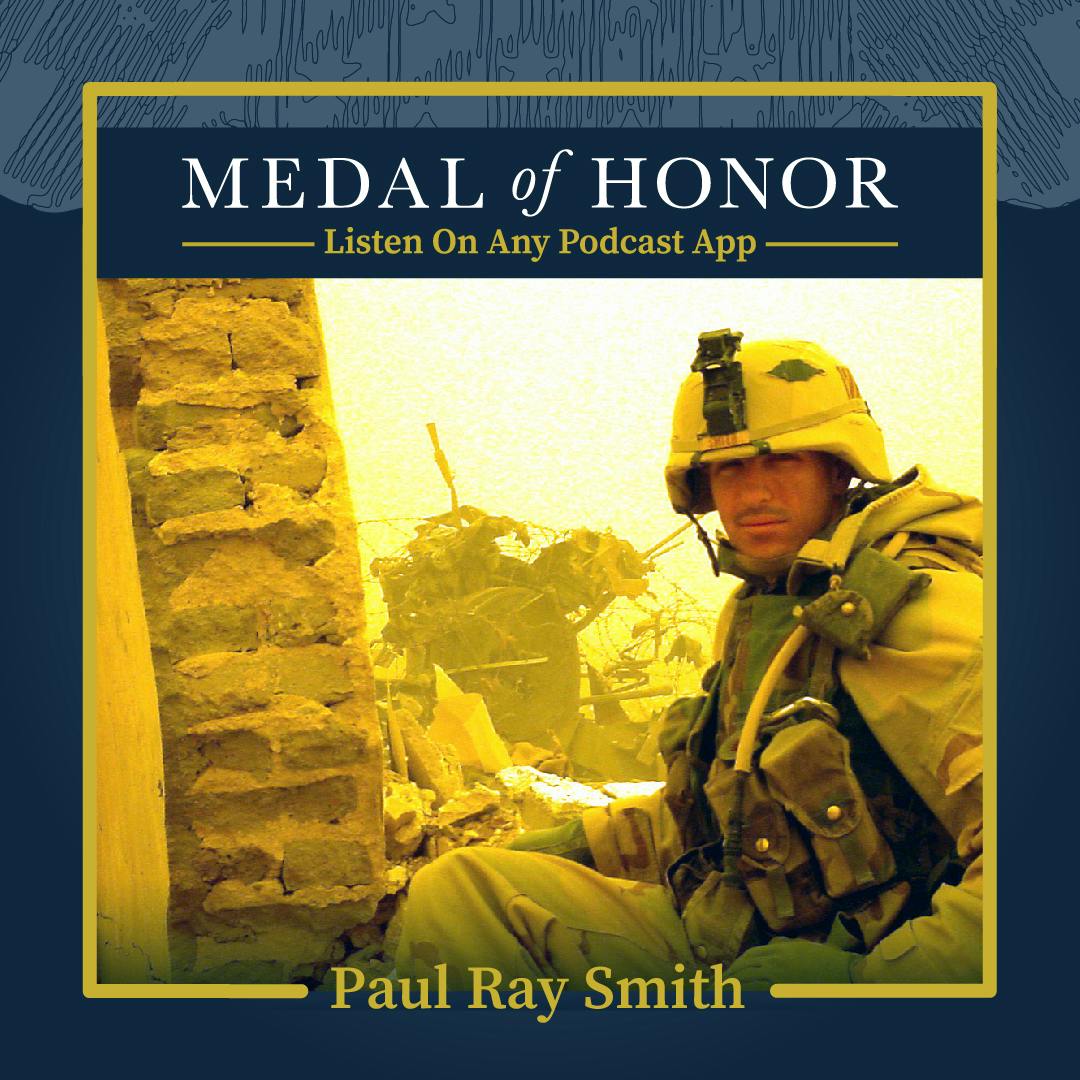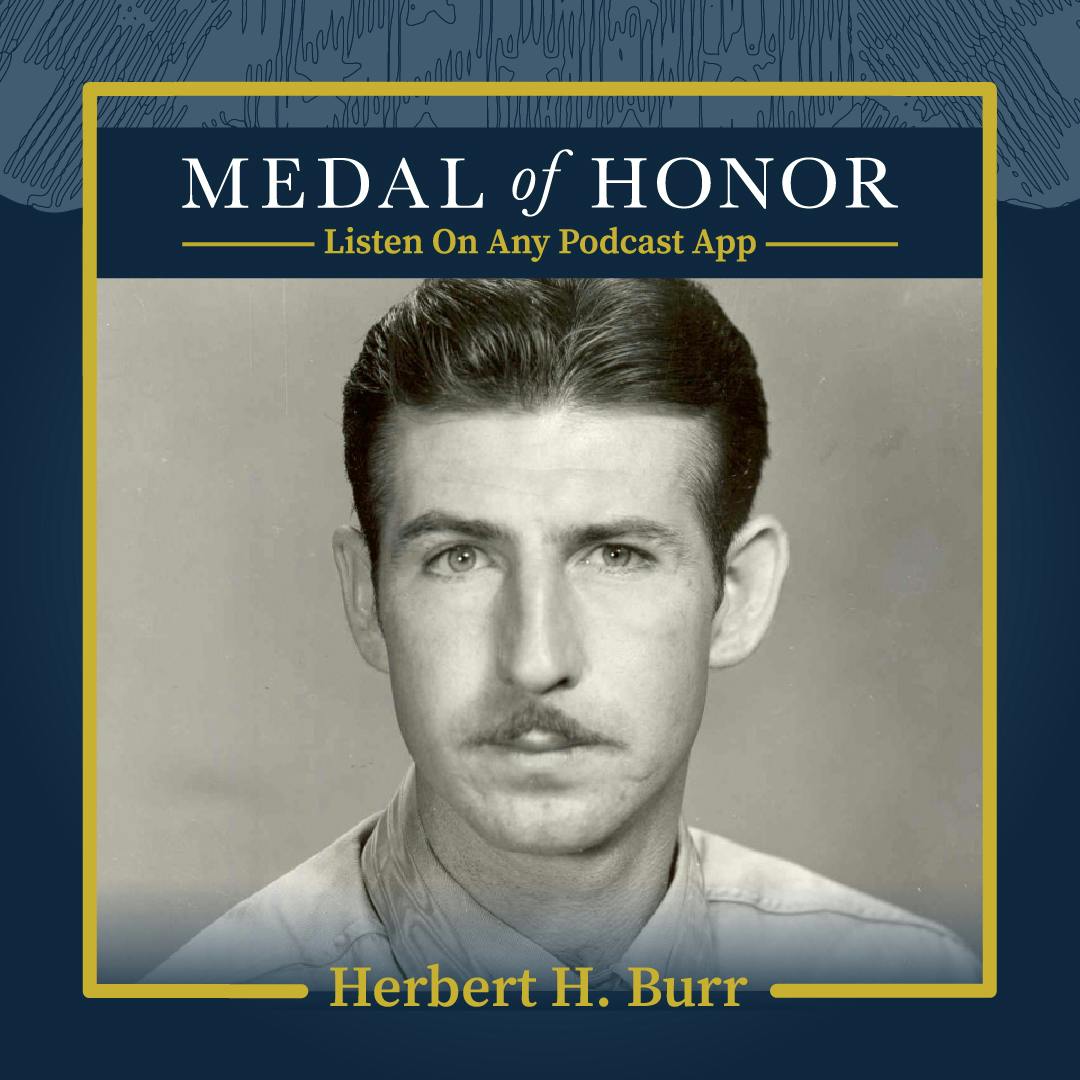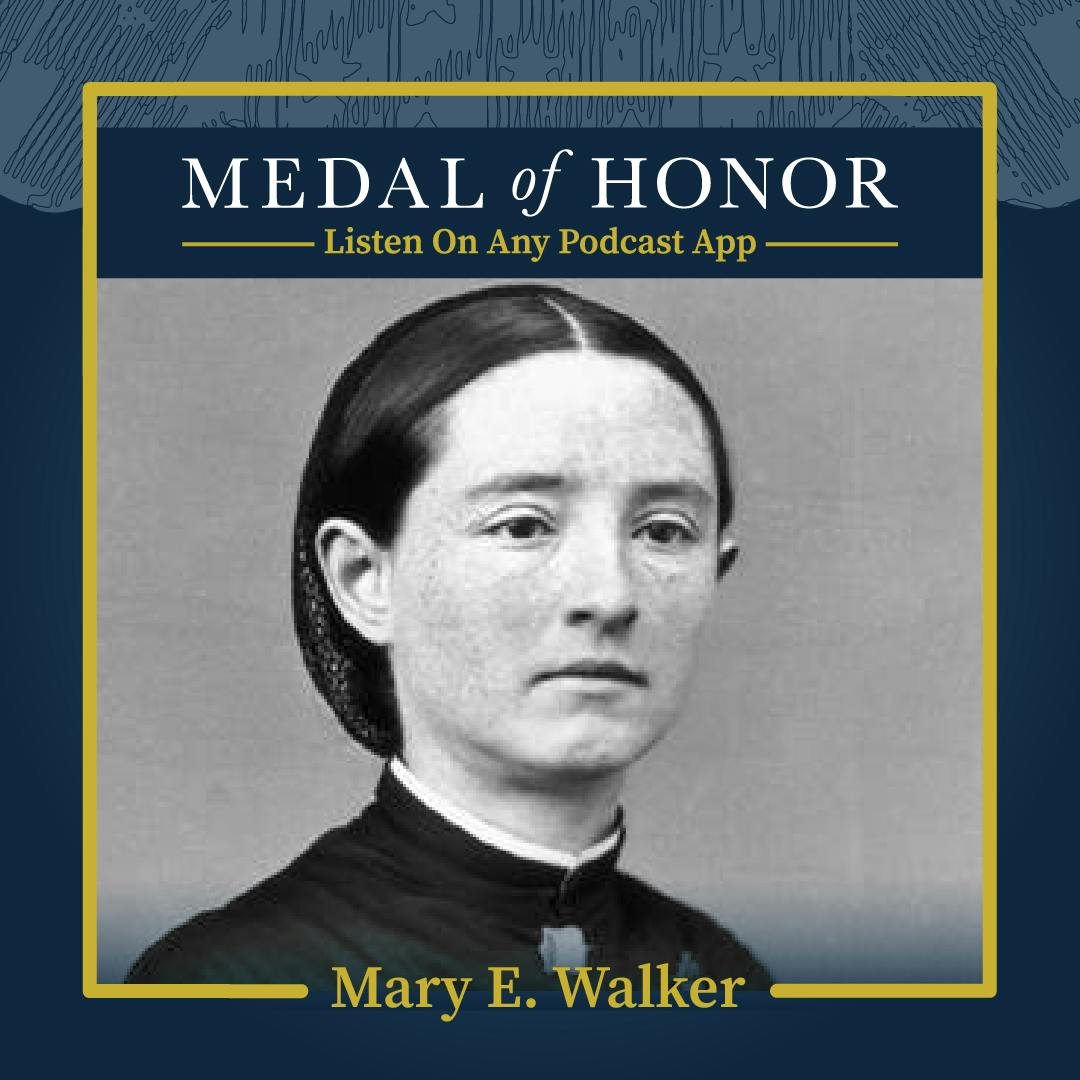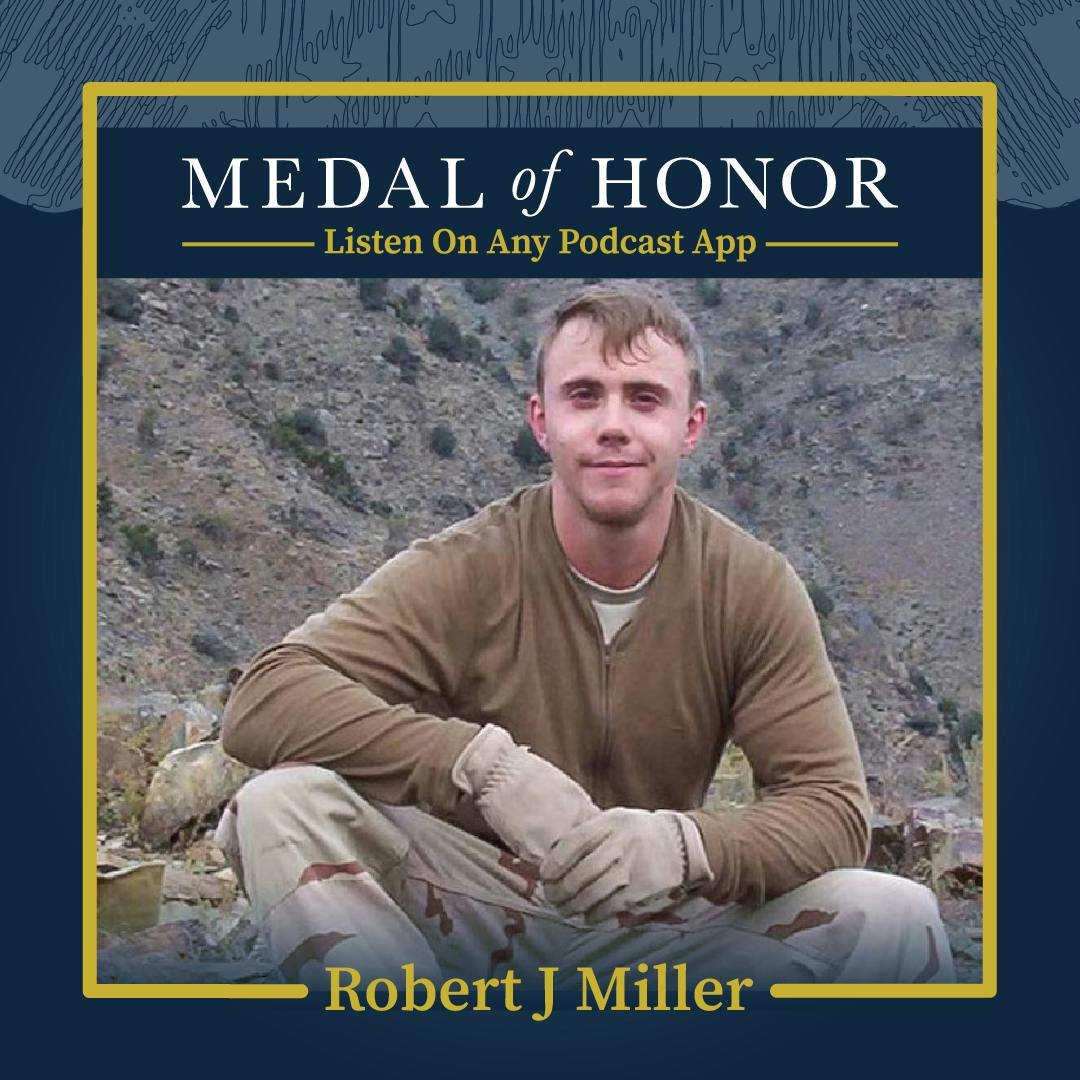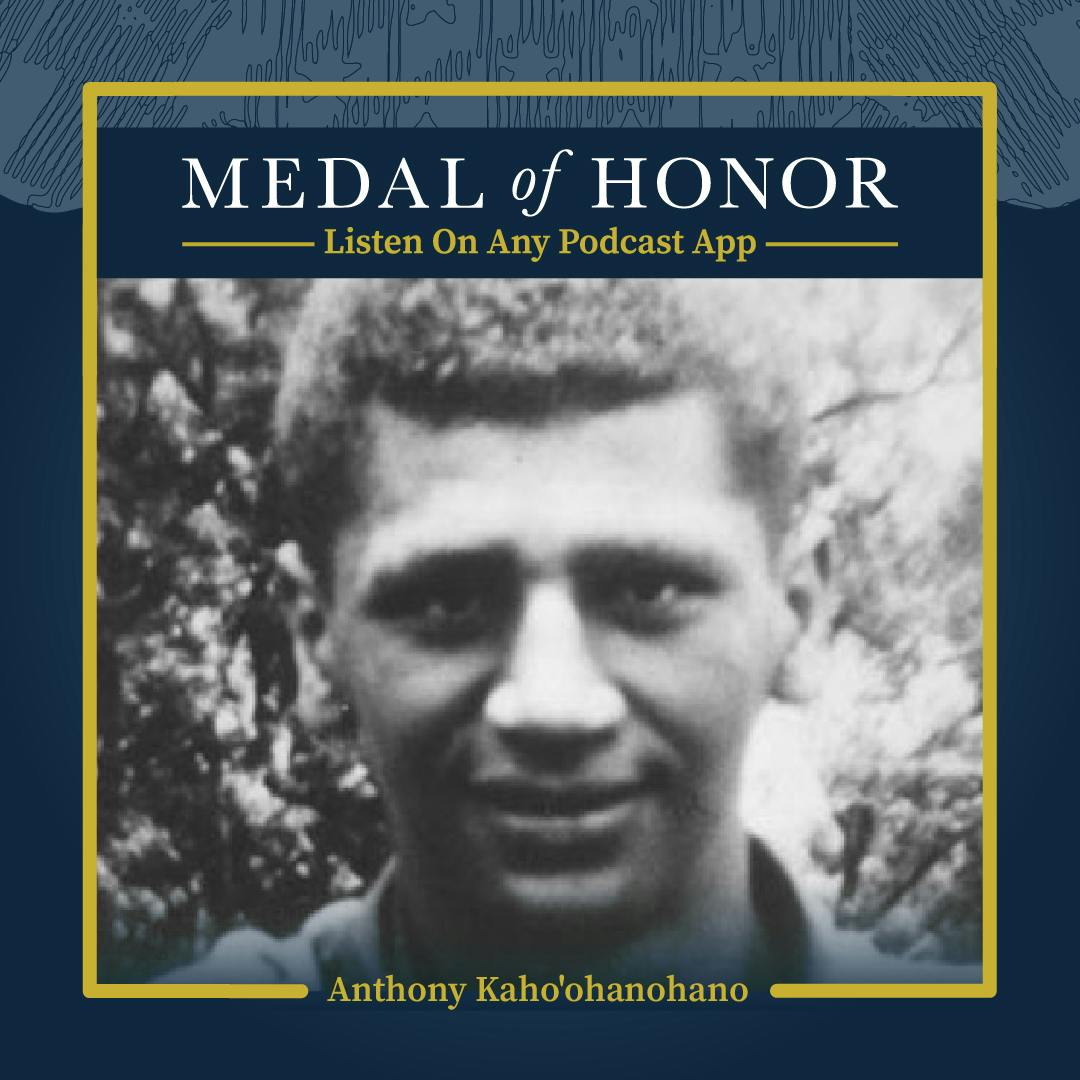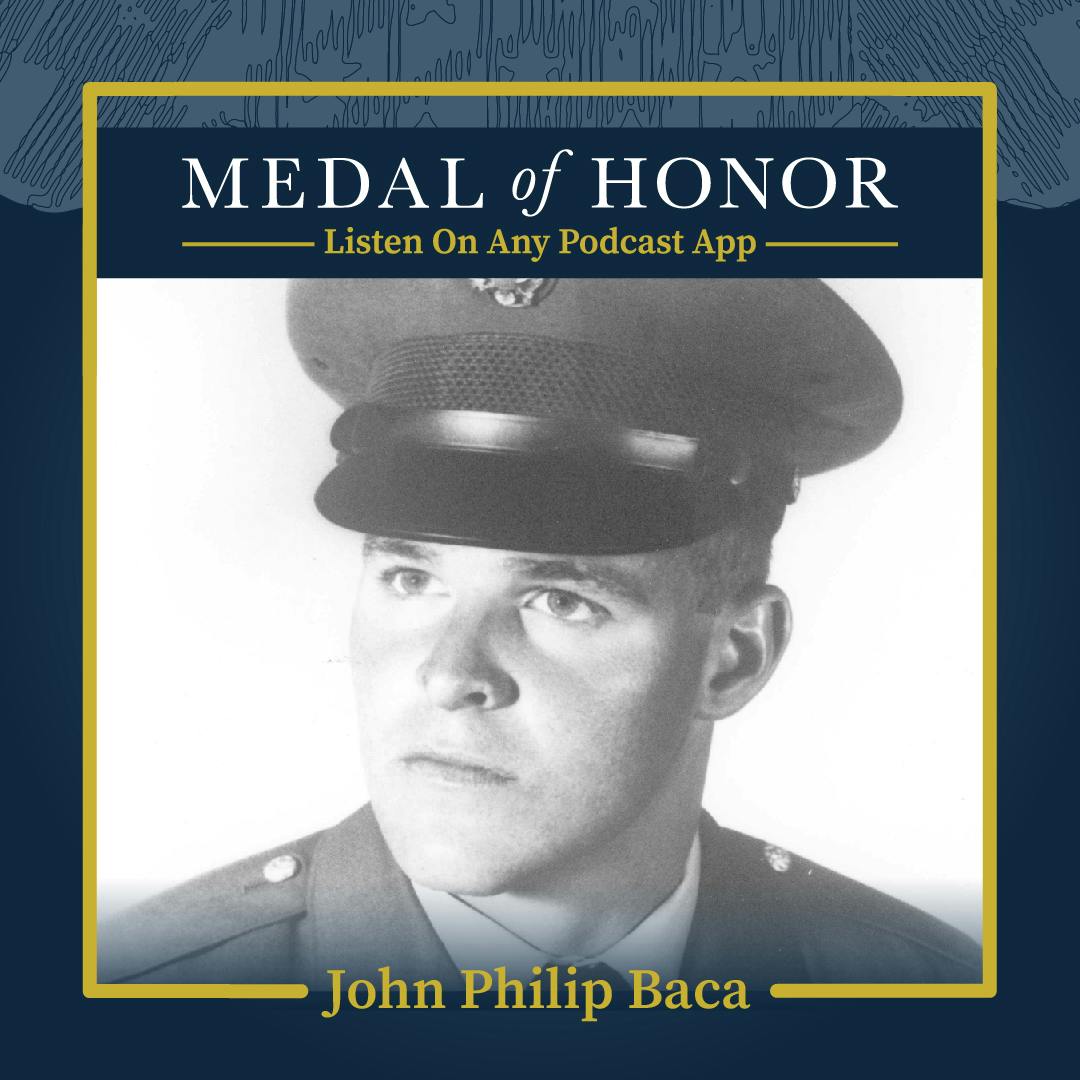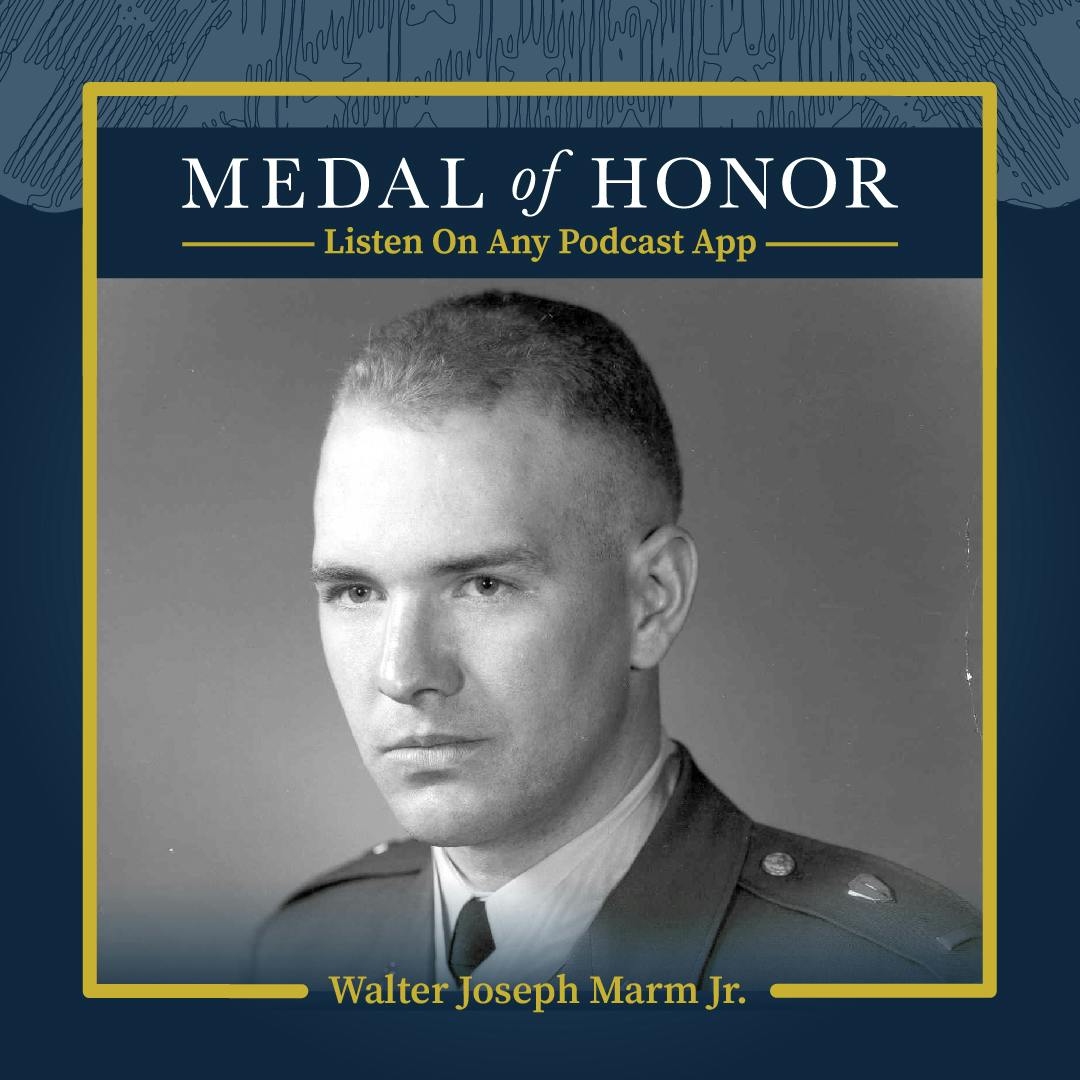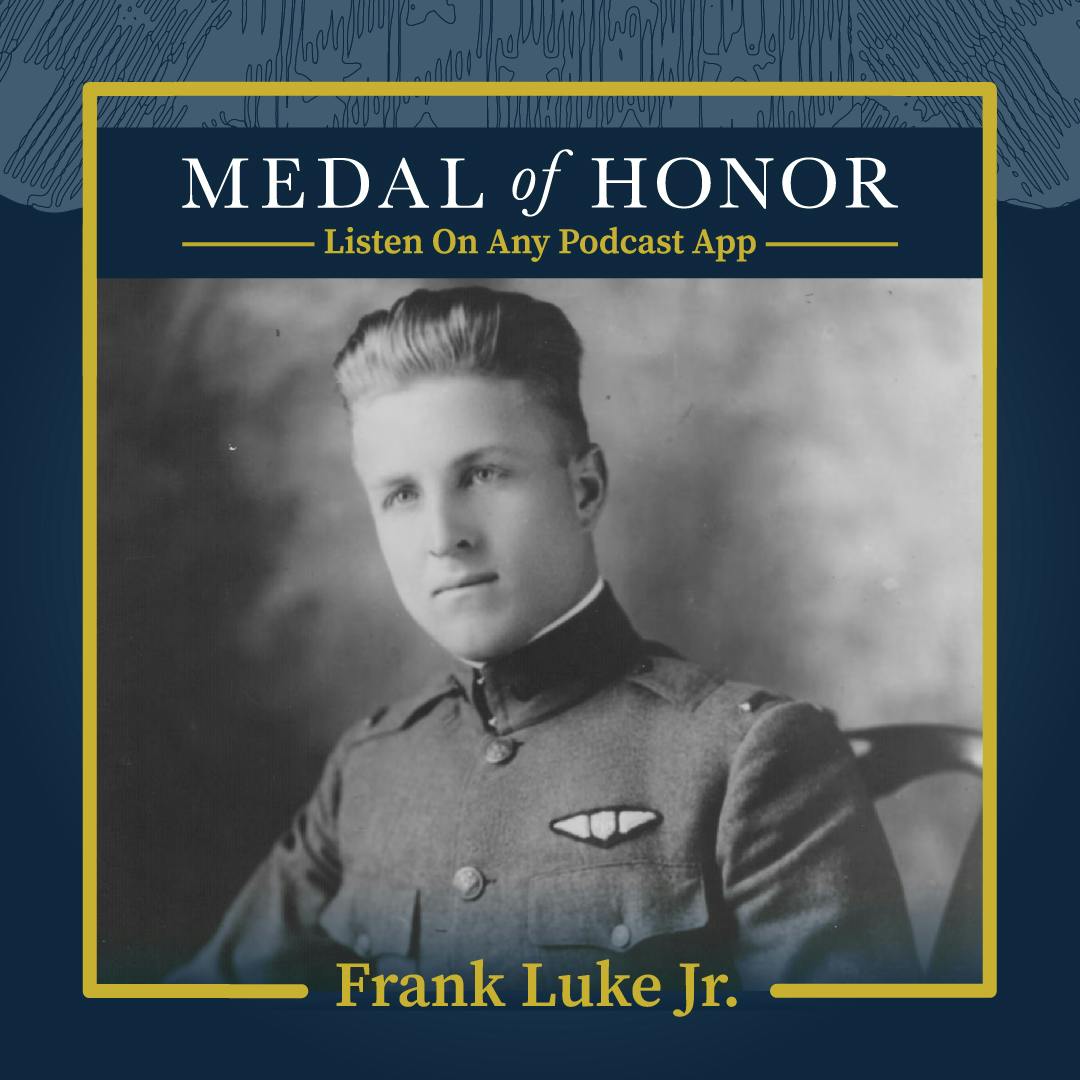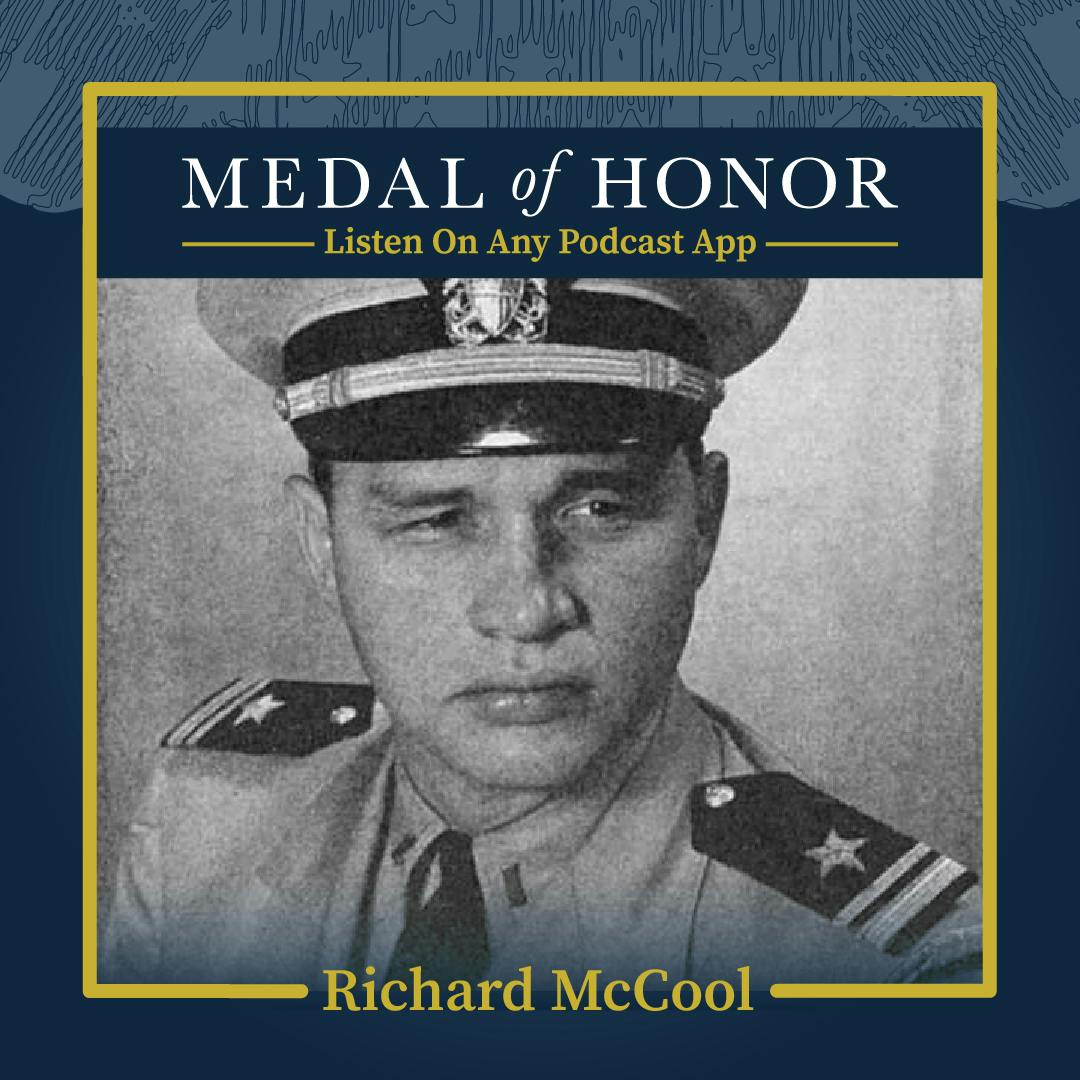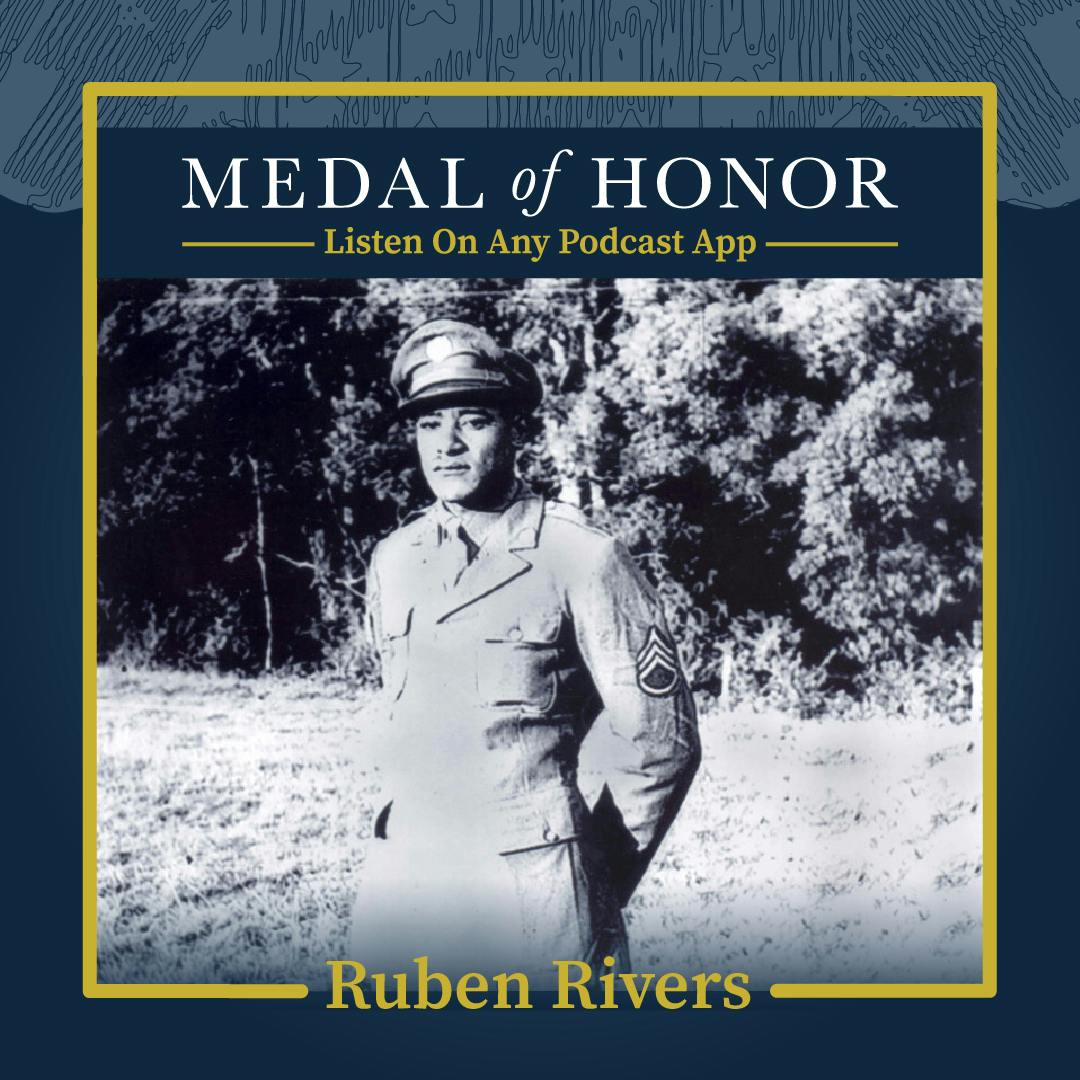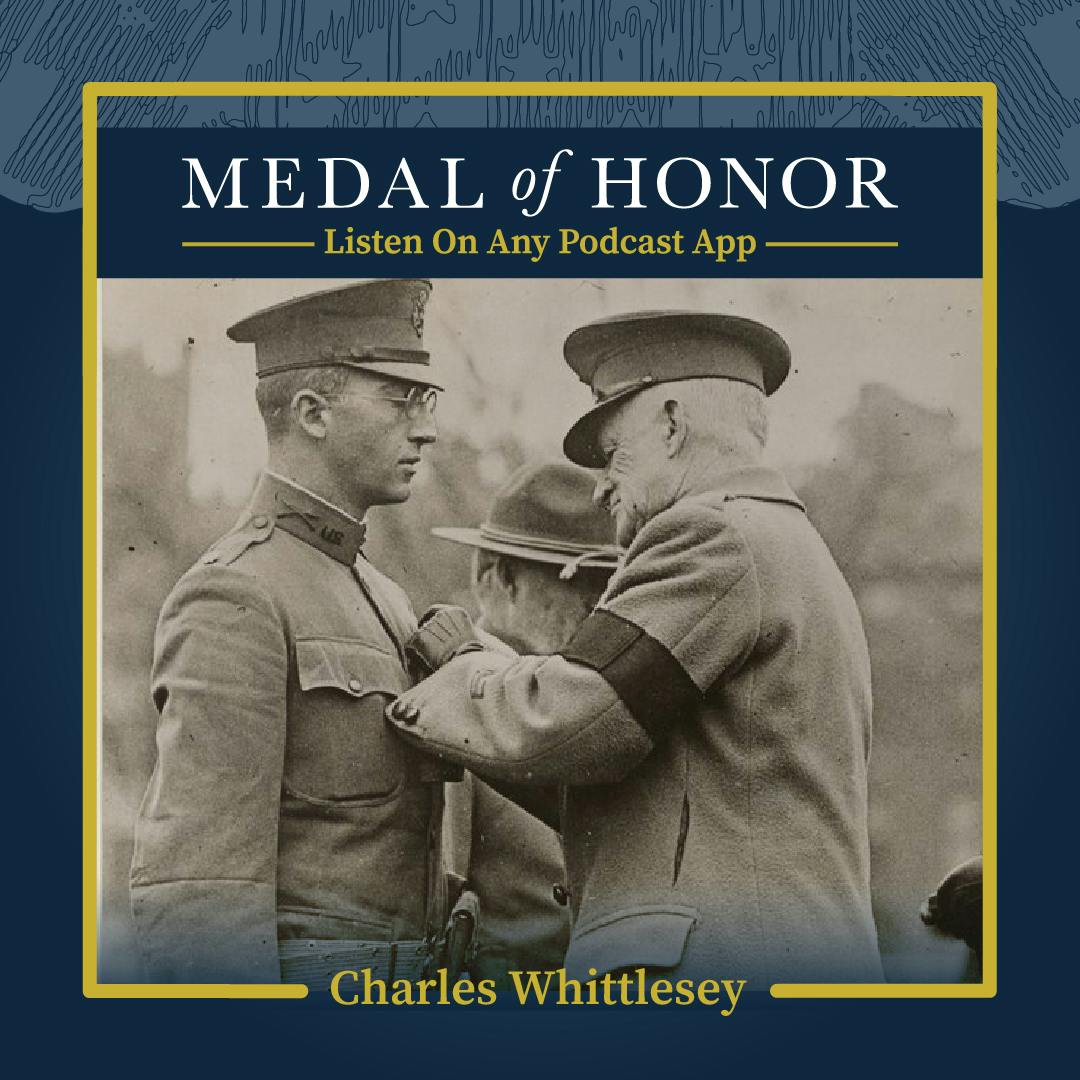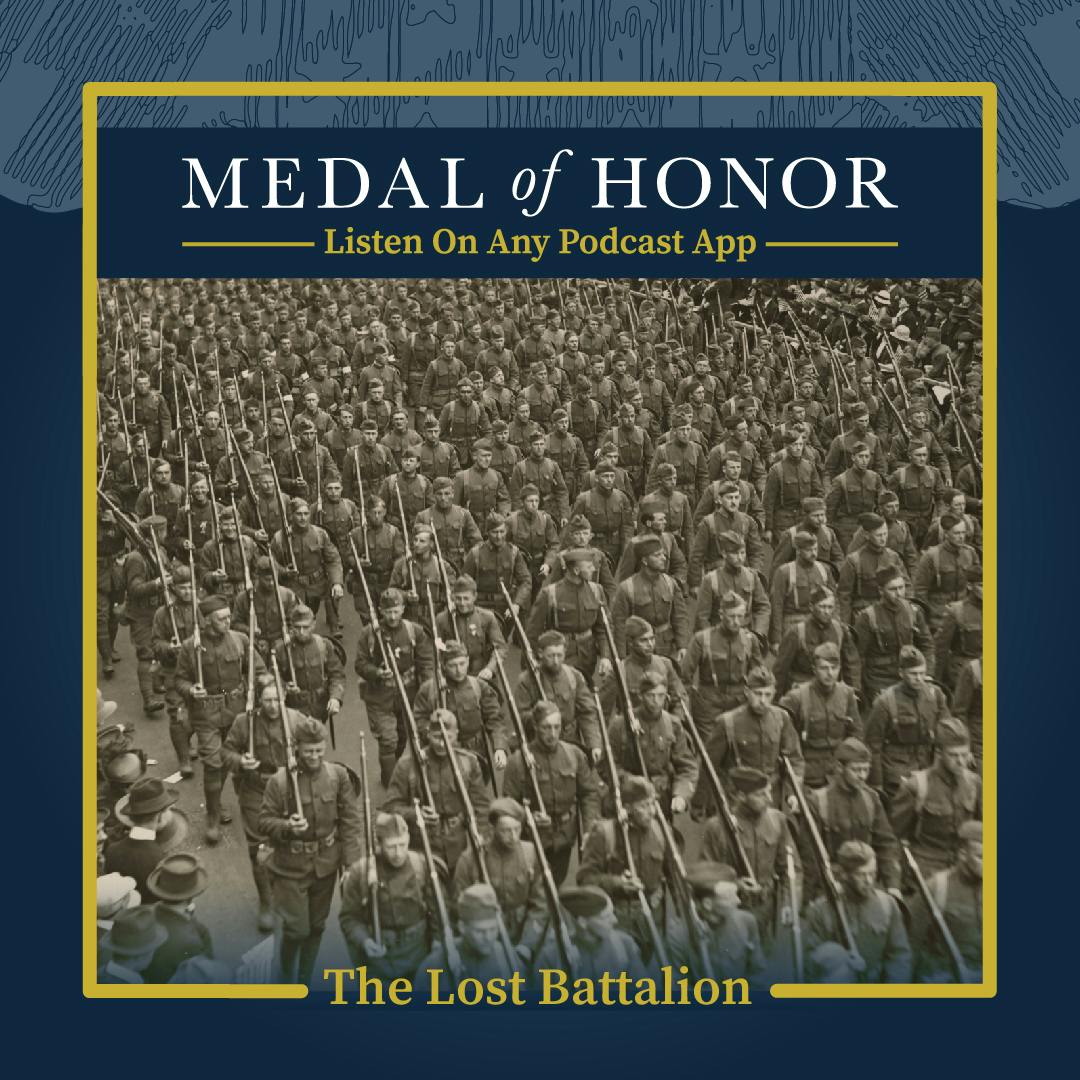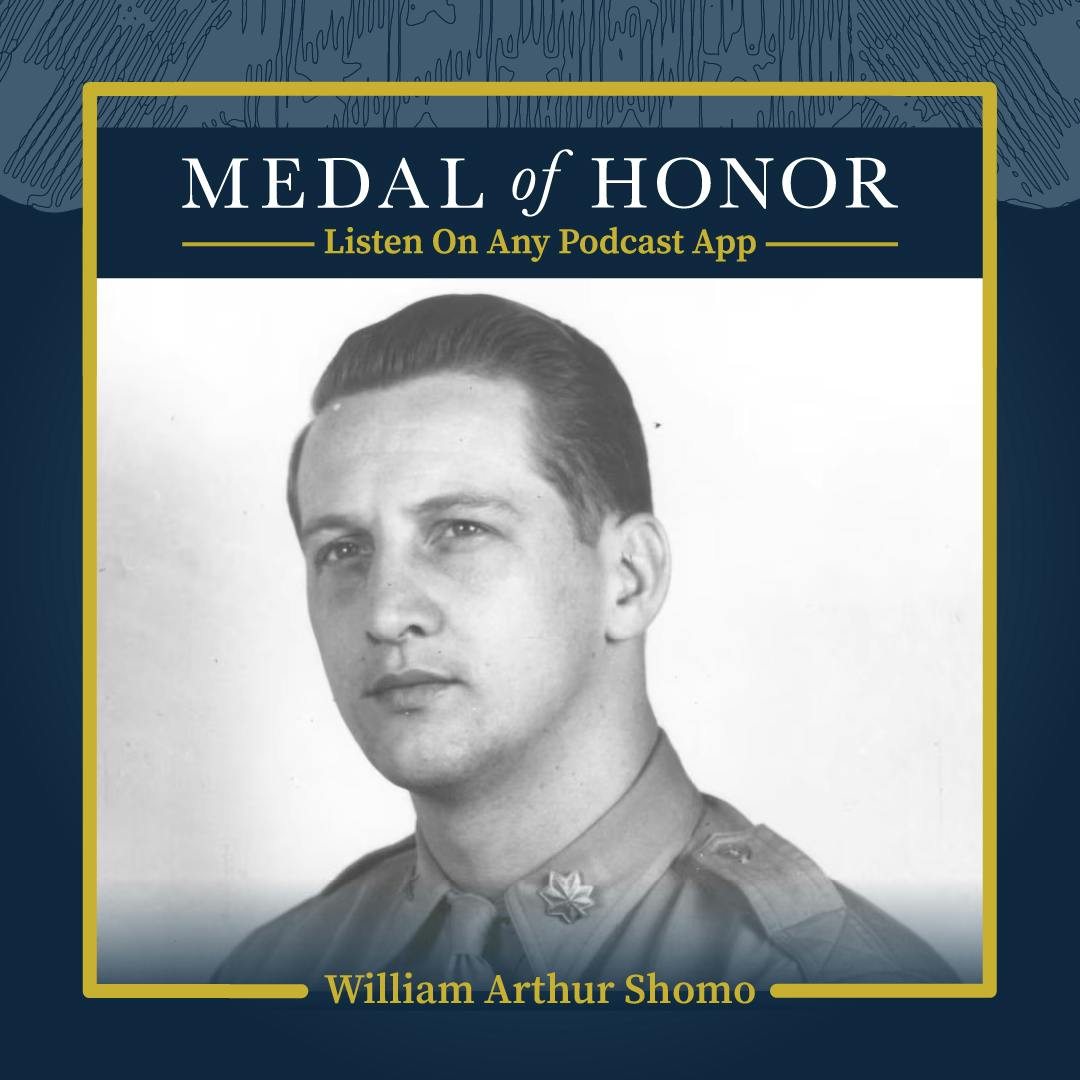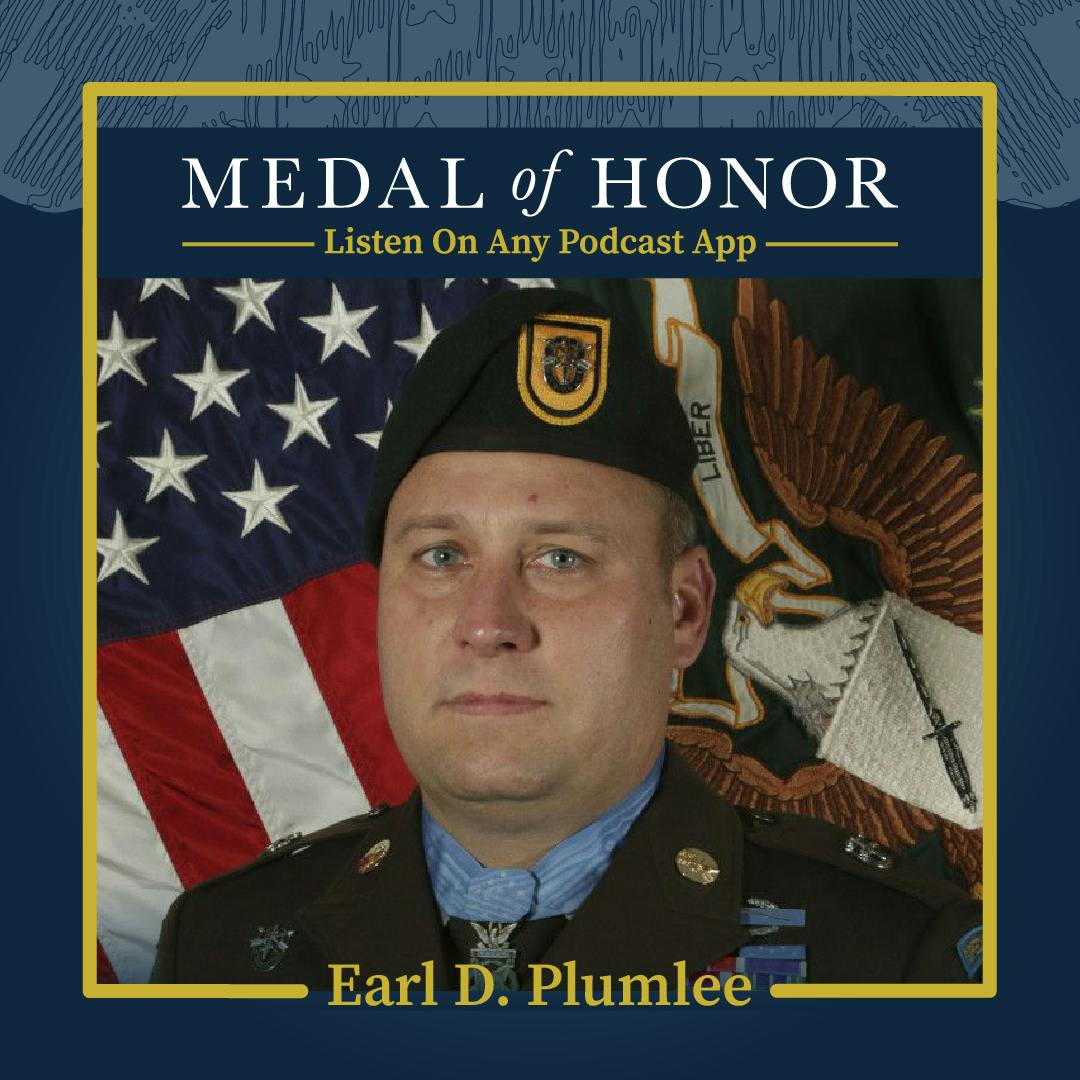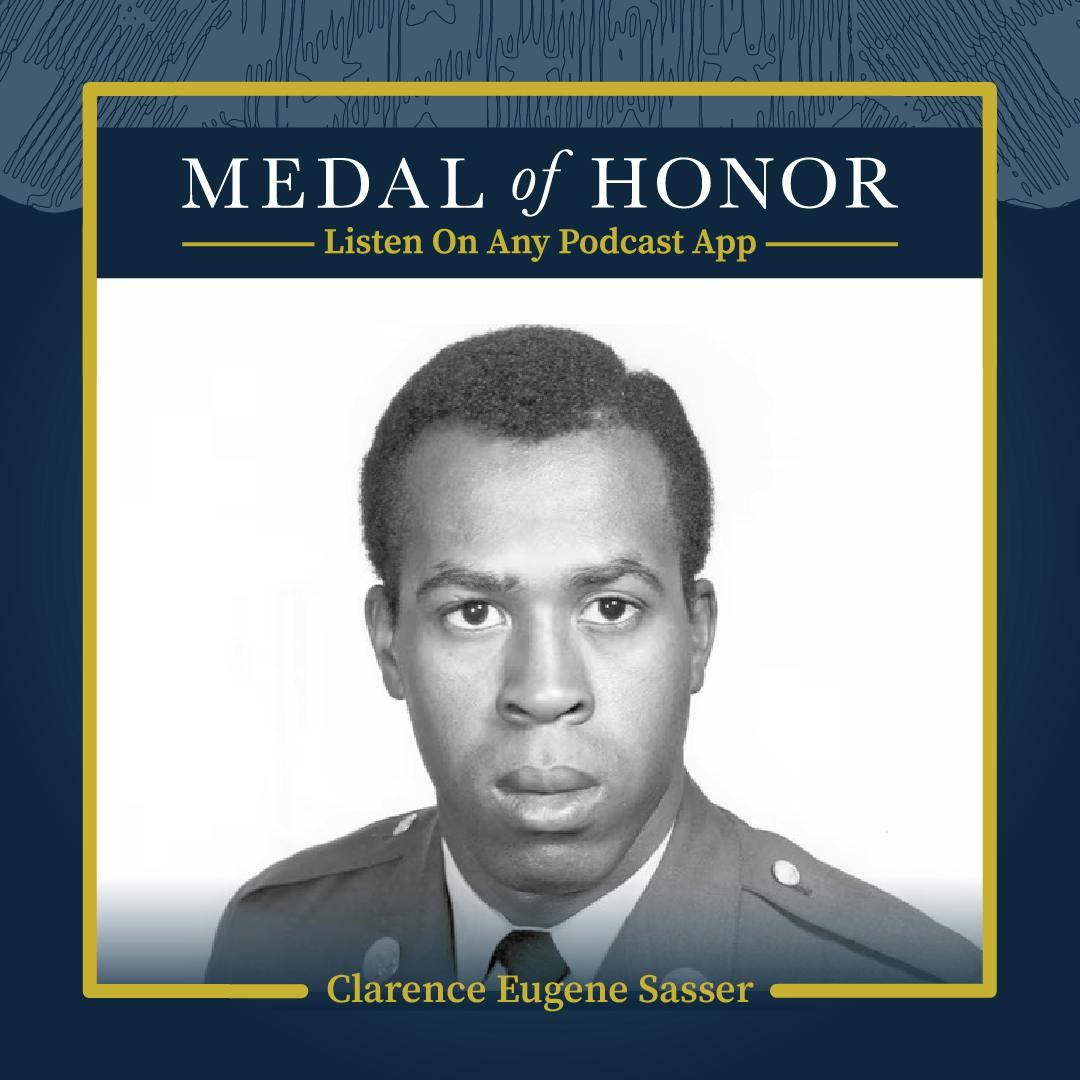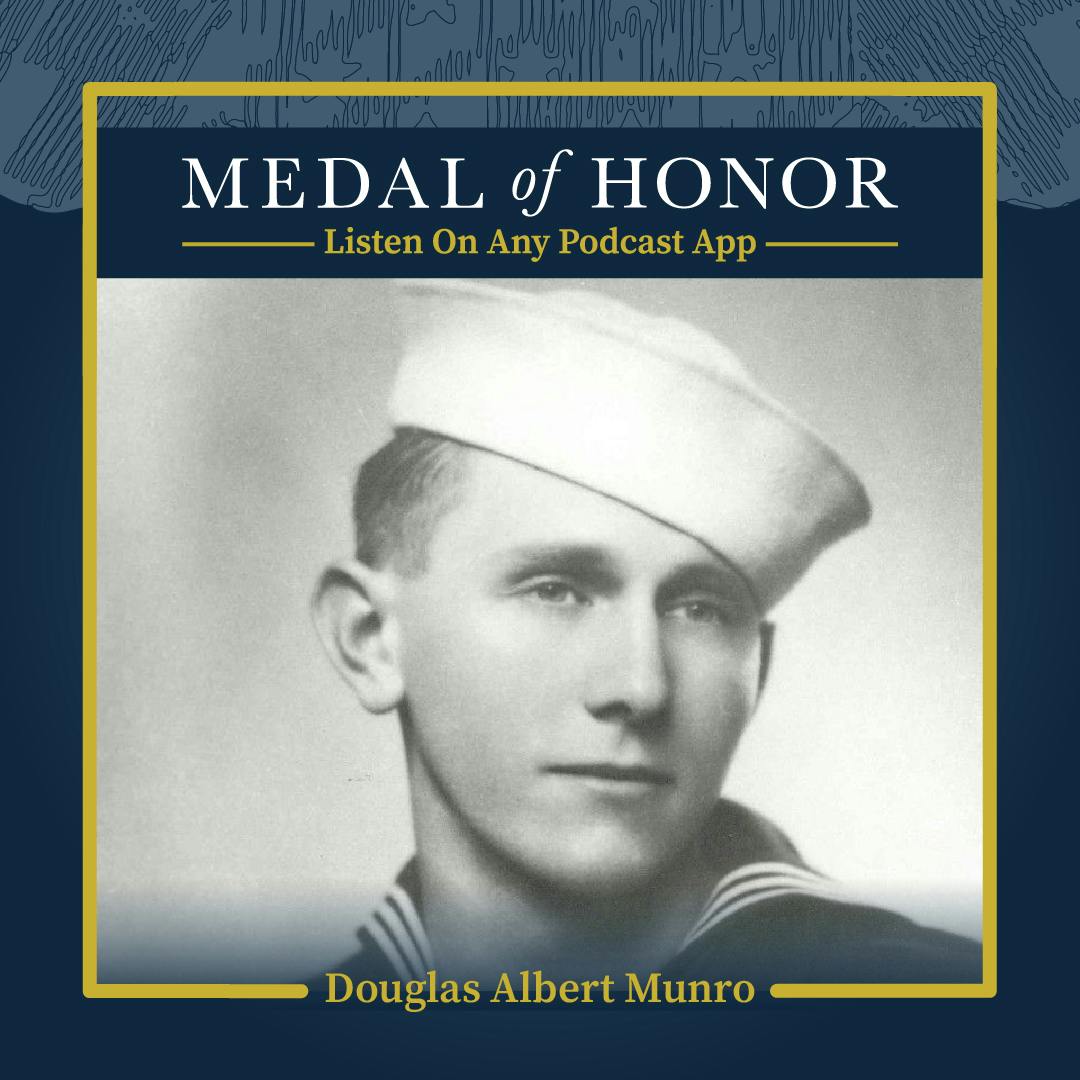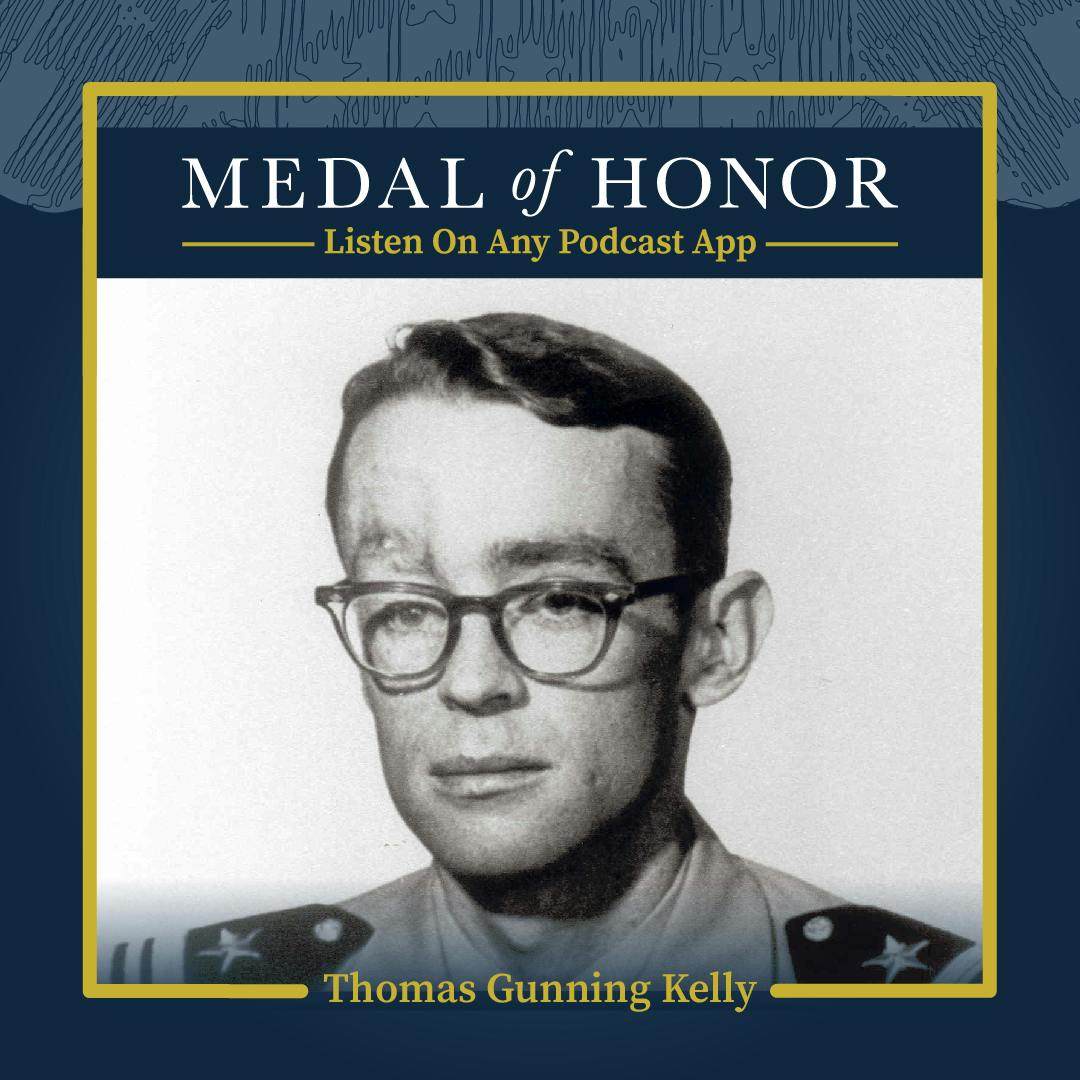Discover Medal of Honor Podcast
Medal of Honor Podcast

Medal of Honor Podcast
Author: Evergreen Podcasts
Subscribed: 39Played: 1,225Subscribe
Share
© All Rights Reserved 2021
Description
Ken Harbaugh tells the stories of service members who have distinguished themselves through an act of valor. These stories from the Civil War to present day include recipients who were originally overlooked for the medal as well as those who were celebrated at the time.This podcast is made in partnership with The National Medal of Honor Museum.
101 Episodes
Reverse
Sergeant First Class Paul Ray Smith was among the first group of Americans to invade Iraq in 2003, serving as a combat engineer.
On April 4th, 2003, American forces were attempting to seize Saddam Hussein International Airport. SFC Smith was leading two platoons of about three dozen men with the goal of setting up a holding area for prisoners of war, but they were attacked by over 100 members of the Iraqi Republican Guard. Smith quickly organized their defense, but the overwhelming enemy force began to swarm the area. Then, an RPG explosion sent shrapnel into three of Smith’s men. Smith organized their evac, but they were still vulnerable during their retreat. Seeing that a nearby carrier was unmanned, Smith exposed himself to enemy fire in order to man the .50 caliber machine gun on top of the vehicle. He engaged, covering his allies and killing as many as 50 enemies before being hit in the head by an enemy round. He was pulled to safety, but died a few minutes later in a hospital.
Smith’s leadership and quick thinking saved the lives of over 100 allied soldiers who were in vulnerable positions just a few hundred meters back. Thanks in part to Smith’s heroism, American forces eventually repelled the Iraqi attack and were able to successfully take control of the airport.
On April 4th, 2005, Sergeant First Class Paul Ray Smith was posthumously awarded the Medal of Honor for his role in protecting his men and fending off the Iraqi attack.
Staff Sergeant Herbert H. Burr served in World War II as a tank gunner. His tank was approaching a town in Germany when they were hit by a bazooka, killing two crewmembers and seriously injuring the platoon sergeant. The surviving crew was forced to evacuate the vehicle, but Burr, delayed by his exit hatch that couldn’t open, feared being targeted upon leaving the vehicle. So, without any other crew, he commandeered the tank and drove it deeper into the town. He made a left turn where he was faced with an anti-tank gun that should have killed him, but Burr did something that was completely unexpected: he advanced. The enemy was thrown off by this decision, giving Burr just enough time to run over the gun with his tank, forcing the enemy to flee. Burr continued on, side swiping a German truck and knocking it over before heading back to his company. Upon his return, he exited the tank and braved sniper fire to reach medics and direct them towards his injured comrades.
Captain Steven Logan Bennett was flying an OV-10 Bronco near Quang Tri, Vietnam in 1972 when he received an urgent call for help. A friendly South Vietnamese ground unit had overextended, and were about to be engaged by nearly 300 enemies. Bennett called for air support, but none was available. He then called for artillery, but it turned out that it would risk hitting enemy troops. Seeing no other way to help, Bennett engaged the ground forces himself, disregarding the fact that his OV-10 was particularly susceptible to surface to air missiles. He strafed four times and avoided at least two missiles before one finally hit, destroying his left engine. He was kept airborne by his right engine, but a fire on his wing threatened to ignite the fuel storage, so he needed to act fast. His backseater couldn’t eject because his parachute had been destroyed by the missile, so the only option was to attempt a water landing. He knew that the OV-10 was not suited for this, and in fact no pilot had ever survived an OV-10 ditching, but he ignored the risks. His aircraft hit the water and was flung into a wing-over-wing tumble before settling nose first underwater. Bennett did not survive the crash, but his backseater did.
On August 8th, 1974, Captain Steven Logan Bennett was posthumously awarded the Medal of Honor for his extraordinary heroism and unparalleled concern for his companion. He’s credited with saving the lives of many South Vietnamese ground soldiers and his backseater.
Dr. Mary E. Walker spent her whole life defying gender roles. She saved up money to go to college to become a Doctor, refused to wear women’s clothing her whole life, and served as an “Assistant Surgeon” (but still technically a civilian) during the war. She was captured and held as a prisoner of war for four months, and at the end of the war, she was awarded the Medal of Honor for her devotion to the detriment of her own health. Her medal was later rescinded in 1917, along with 911 other recipients, after the military decided to create eligibility requirements for the Medal of Honor. 50 years later, thanks to the help of her descendants, Dr. Walker’s Medal of Honor was posthumously restored by President Carter.
Dr. Walker was a vocal supporter of women’s suffrage, equal pay, and healthcare, and testified to Congress in support of women’s suffrage in 1912 and 1914. She received harassment her whole life for how she dressed, and in her later years, she opened her home to others who were ostracized by society.
Staff Sergeant Robert J. Miller served in Afghanistan as a Weapons Sergeant. In January of 2008, Miller was part of a Special Forces combat reconnaissance unit tasked with confirming enemy activity in the Gowardesh Valley. The unit had a successful initial engagement, in which Miller relayed information that became crucial to a lethal allied air strike. Afterwards, Miller was ordered to be the point man for a patrol tasked with doing a post battle assessment. The patrol separated from the unit, traveling to the opposite side of the valley and into a natural checkpoint as they navigated up a steep hill. There they were ambushed by 140 enemies. Holding elevated fighting positions on three sides of the patrol, the insurgents fired from less than 25 meters away. The patrol immediately retreated, but Miller charged forward, engaging the enemy and drawing a majority of the fire away from his vulnerable allies. He did this for over 25 minutes, killing 16 enemies and wounding 30, before succumbing to two gunshot wounds. He’s credited with saving the lives of 23 allies. He was awarded the Medal of Honor for his bravery and sacrifice that day.
Anthony T. Kaho’ohanohano was a native Hawaiian who served in the Army in the Korean War before Hawaii was even a state. When an overwhelming enemy force attacked their defensive position, Kaho’ohanohano ordered his men to fall back, but he stayed behind. Kaho’ohanohano laid down deadly coverfire to protect his men as they retreated, firing a machine gun and throwing grenades. He was hit in the shoulder, but held his position until he had completely exhausted all of his ammo and grenades. Armed only with a shovel, Kaho’ohanohano was overwhelmed by enemy forces, but killed two in hand-to-hand combat.
Seeing Kaho’ohanohano’s fierce dedication and bravery, his squad was inspired. They rallied and launched a successful counter attack, pushing out the enemy. When the dust cleared, they found that Kaho’ohanohano’s machine gun had bent because it had fired so many bullets.
Kaho’ohanohano was initially awarded the Distinguished Service Cross for his sacrifice, but decades later, it was upgraded to the Medal of Honor. On May 2nd, 2011, Anthony T. Kaho’ohanohano was posthumously awarded the Medal of Honor, and it was received by his nephew. He’s buried at the Maui Veterans cemetery in Maui, and a National Guard Armory in Maui was named after him.
Sergeant John Phillip Baca served in the Army in a recoilless rifle team. His company was near Quan Loi, Vietnam and settled in for the night when an explosion went off in the distance. They recognized it as one of the tripwires they had set to alert them of enemies in their position. Baca and his platoon responded to the disturbance, and quickly came under heavy fire. Baca was preparing to fire when a friendly wounded soldier ran past, bumping Baca’s weapon off his shoulder. This caused Baca to see a grenade near his best friend and fellow soldier, Art. Baca shouted, alerting his platoon of the danger, and instinctively pushed Art out of the way. He then placed the top of his steel helmet on his stomach and jumped on the grenade. Baca and his helmet absorbed almost all of the concussion and shrapnel, and he lived to make a full recovery.
Colonel Walter Joseph Marm Jr. served in the Army during Vietnam. On the 14th of November, 1965, Marm and his company were tasked with rescuing a platoon that had been surrounded by the NVA. After their first push was unsuccessful, Marm led his platoon through heavy machine gun and light arms fire. Marm killed four enemies that approached their position before exposing himself to enemy fire in order to locate their hidden machine gun. He then charged the machine gun bunker alone, running through 30 yards of open terrain, again exposed to enemy fire. He then tossed a grenade into the bunker, killing several of the 8 enemies that manned it, and killed the rest with his rifle. As he motioned for his men to join up with him, he was shot. The bullet entered his left jaw and exited through his right cheek. Despite the wound, Marm walked back to his company by himself, where he was evac’d to a hospital.
1st Lieutenant Frank Luke Jr. served in the Army in World War I as a pilot. He quickly gained a reputation as being arrogant and overconfident, but he had the skills to back it up. He scored 18 aerial victories in under three weeks, mostly on unsanctioned missions. His friendship to his group commander allowed him to fly as he pleased, consequence free.
On September 29th, 1918, after almost being grounded by his squad commander, Luke left on another solo flight, destroying three German observation balloons. What happened after became subject exaggeration and speculation for decades to come. Originally, it was thought that Luke fought 10 German planes, destroying two of them before being shot down himself, and then died in a gunfight on the ground with German soldiers. For this he was awarded the Medal of Honor.
Decades later in 2008, thanks to archeological digs, interviews with descendants of witnesses, reviewing unpublished material, and analyzing evidence, the truth was finally revealed. After destroying three German observation balloons, Luke had circled back to head home, but was down by a German machine gun. He crash landed and attempted to escape on foot, but succumbed to his injuries.
Luke was reburied at the Meuse-Argonne Cemetery. He was awarded the Distinguished Service Cross and the Italian War Cross, in addition to being the first airman ever awarded the Medal of Honor. He’s been commemorated with a statue that stands at the Arizona State Capitol, and by Luke Air Force Base, which was named after him. To this day, Luke’s Medal of Honor citation has never been updated to reflect the full picture.
After an enemy Japanese plane crashed into the water besides the USS William D. Porter, it exploded causing the destroyer to partially leave the water and crash down again. Thanks to Lieutenant Richard Miles McCool Jr., the commander of a smaller Landing Craft Support ship (LCS-122), all 300 crew members were evacuated to safety.
The next day, on June 11th, 1945, the LCS-122 was subject to its own Kamikaze attack that made a direct hit to its bow. The impact caused an explosion and a serious fire that threatened to ignite the ship’s ammunition cache, igniting 120 rockets all at once. Despite his right side being covered in burns and shrapnel, Lt. McCool helped two wounded sailors escape the flaming deckhouse, and directed his crew in order to keep the fire from spreading. His lung then collapsed, but he was able to receive aid and be evacuated to another LCS.
Lt. McCool was awarded the Medal of Honor role in saving both the crew of the USS William D. Porter on June 10th, and his own crew on June 11th, 1945.
Staff Sergeant Ruben Rivers served in the Army during World War II. He was a member of the 761st tank battalion, a primarily all black battalion nicknamed the Black Panthers. The panthers were considered an experiment by the U.S. military. At the time, the military was segregated, and they didn’t think black soldiers had the intellect or ability to operate tanks. The 761st had to train for two years before being deployed, as opposed to the usual few months.
Rivers and the rest of the Black Panthers arrived in Normandy in 1944. During 183 days of continuous combat, the Panthers traveled through six countries and liberated 30 towns on their march to Germany, becoming the first african american tank battalion to see combat.
One day near Geubling, France, River’s tank hit a mine, causing shrapnel to shred Rivers’ leg to the bone. He repeatedly refused morphine and evacuation, not wanting to leave his battalion. A few days later, the panthers encountered a German anti-tank unit, and their commanding officer ordered a retreat. Seeing the location of the enemy, Rivers radioed and said “I see ‘em, We’ll fight ‘em!”. He and another tank engaged the enemy, providing cover fire for the rest of the panthers as they withdrew. Suddenly River’s tank was hit by two high powered artillery shells, killing him and wounding the rest of the crew.
Rivers’ Medal of Honor recommendation was initially denied, but it was a long shot considering that at that point, no African American had received the award for their actions in either of the world wars.
Over 50 years later, Staff Sergeant Ruben Rivers was posthumously awarded the Medal of Honor for his fighting spirit and daring leadership.
The Lost Battalion was the name given to 554 American soldiers who were encircled by German forces during the Meuse-Argonne Offensive of World War I. These men defended their vulnerable position for nine days with very little food, water and supplies. This episode tells the story of four soldiers who were awarded the Medal of Honor during those nine days: Major Charles Whittlesey, Captain George McMurtry, 1st Lieutenant Harold Goettler, and 2nd Lieutenant Erwin Bleckley.
The Lost Battalion was the name given to 554 American soldiers who were encircled by German forces during the Meuse-Argonne Offensive of World War I. These men defended their vulnerable position for nine days with very little food, water and supplies. This episode tells the story of four soldiers who were awarded the Medal of Honor during those nine days: Major Charles Whittlesey, Captain George McMurtry, 1st Lieutenant Harold Goettler, and 2nd Lieutenant Erwin Bleckley.
Colonel William A. Shomo served as a pilot in the pacific theater during World War II. While on a reconnaissance mission, Shomo and his wingman encountered a Japanese bomber convoy and attacked despite being outnumbered 13 to 2. Together they destroyed 10 enemy aircraft, and the remaining three were forced to flee. Shomo earned the Medal of Honor for destroying 7 of those enemies.
On a raid in a Taliban compound, Master Sergeant Petry was wounded in both legs when an enemy grenade landed by his wounded comrade. Without thinking twice, Petry saved his friend by throwing the grenade back and was awarded the Medal of Honor for his self-sacrifice.
You can read Petry's Medal of Honor Citation on the National Medal of Honor Museum website.
The Medal of Honor podcast team would like to take a moment to thank our listeners for all your support this year. Your kind words and support are greatly appreciated. We’re taking the next two weeks off to enjoy the holidays with our families, but next week we’ll be re-airing an episode that we’re really proud of.
Happy Holidays, and see you next year.
MSG Plumlee’s Medal of Honor story is straight out of a movie. When enemies with suicide vests attacked his base in Afghanistan, Plumlee was out gunned and outmanned. He fought multiple insurgents with little ammo, and miraculously emerged from the fight with relatively minor injuries despite being under heavy fire.
You can read Plumlee's Medal of Honor Citation on the National Medal of Honor Museum website.
Specialist 5th Class Clarence Eugene Sasser served in Vietnam as an Army Medic. Through numerous wounds and excruciating pain, he continuously administered aid to fellow soldiers for 20 hours as his company was attacked in Vietnam.
To hear more of Sasser's story listen to his episode on our other show; Warrior In Their Own Words.
You can read Sasser's Medal of Honor Citation on the National Medal of Honor Museum website.
Leading up to World War II, Signalman First Class Douglas Albert Munro and Chief Signalman (later Commander) Raymond J. Evans enlisted to the Coast guard on the same day. They quickly became inseparable, only served one short assignment apart.
You can read Munro's Medal of Honor Citation on the National Medal of Honor Museum website.
Lieutenant Commander Thomas Gunning Kelly served in Vietnam as a river assault division commander. Even after a rocket rendered him temporarily blind and unable to walk, he successfully directed his division’s defense of a vulnerable boat until the threat was gone.


